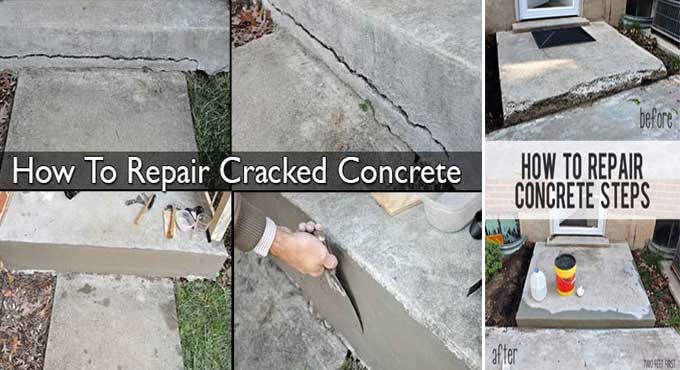NEWS | SOFTWARE | SHEET
Concrete Crack: Methods of Repairing Concrete Crack
A concrete crack refers to a fracture or separation in a concrete structure or surface. It occurs when the concrete material fails to withstand the applied stress or strain, leading to the development of a visible opening. Concrete cracks can vary in size, depth, and shape, ranging from hairline cracks that are barely visible to larger, more significant fractures.
Cracks in concrete can be caused by various factors, including shrinkage, settlement, overloading, temperature changes, or structural defects. It is important to monitor and address concrete cracks promptly to prevent further damage and maintain the structural integrity of the concrete.
How to Select a Suitable Method of Concrete Crack Repair?
Selecting a suitable method for concrete crack repair depends on several factors, including the size and nature of the crack, the cause of the crack, the location of the crack, and the desired durability and aesthetic appearance of the repaired area. Here are some steps to help you choose the appropriate method:
Assess the Crack
Determine the characteristics of the crack, such as its width, depth, and length. Evaluate whether it is a surface crack, a structural crack, or a non-structural crack. This assessment will help you understand the severity and potential implications of the crack.
Identify the Cause
Investigate the underlying cause of the crack. It could be due to factors like shrinkage, settlement, temperature changes, overload, or structural issues. Understanding the cause will help you choose a method that addresses the root problem.
Consider Crack Movement
Assess whether the crack is static or dynamic. Dynamic cracks are those that may continue to move or expand over time. If the crack is still active, you will need a repair method that can accommodate movement.
Determine Repair Objectives
When considering concrete crack repair, it is important to define my repair goals. You need to determine whether you are primarily concerned with ensuring structural integrity, preventing water penetration, or improving the appearance of the repaired area.
These objectives will play a crucial role in influencing the choice of repair method. By clearly identifying my repair goals, you can make a more informed decision about which method will best meet my specific needs and address the desired outcome.
Evaluate Repair Methods
There are several methods available for concrete crack repair, including epoxy injection, polyurethane injection, crack stitching, routing and sealing, concrete overlays, and more. Research and understand the pros, cons, and suitability of each method based on your crack assessment and repair objectives.
Seek Professional Advice
If you are uncertain about the best repair method or if the crack is significant or complex, it is advisable to consult with a structural engineer or a qualified concrete repair professional. They can provide expert guidance and recommend the most appropriate solution for your specific situation.
What are the different methods of Concrete Crack Repair?
There are several methods available for concrete crack repair, each suited to different types of cracks and repair objectives. Here are some commonly used methods:
Epoxy Injection
This method involves injecting epoxy resin into the crack to bond and seal it. It is effective for both structural and non-structural cracks and can restore the concrete's strength and prevent water penetration.
Polyurethane Injection
Similar to epoxy injection, this method uses polyurethane resin instead. Polyurethane has excellent flexibility and can accommodate crack movement. It is often used for active cracks or where flexibility is required.
Crack Stitching
In this method, metal or fibre-reinforced stitching pins or rods are installed across the crack to provide structural reinforcement. It is suitable for wider or more significant cracks and can restore load-bearing capacity.
Routing and Sealing
This technique involves widening the crack with a saw or grinder, cleaning it, and then sealing it with an appropriate sealant or filler. It is commonly used for surface cracks and helps prevent water infiltration and further deterioration.
Concrete Overlays
For cosmetic repairs or to enhance the appearance of the concrete surface, a concrete overlay can be applied. It involves placing a thin layer of new concrete over the existing surface, effectively covering the cracks.
Carbon Fiber Reinforcement
Carbon fiber sheets or fabric can be bonded to the concrete surface using epoxy adhesive to provide additional strength and reinforcement to the cracked area. This method is often used for structural cracks or areas experiencing high tensile stress.
Chemical Grouting
This method involves injecting specialized grouts or resins into cracks to fill voids and stabilize the surrounding soil.
It is commonly used for cracks caused by soil settlement or as a preventive measure against future cracks.
Concrete Replacement
In cases where the crack is severe, or extensive, or the structural integrity of the concrete is compromised, removing and replacing the damaged section may be necessary. This method is more time-consuming and costly but ensures a complete repair.
To get more details, go through the following video tutorial.
Lecturer: Lowe's Home Improvement
The selection of the appropriate method depends on the nature of the crack, the desired repair objectives, and professional assessment. Consulting with a structural engineer or concrete repair professional can help determine the most suitable method for your specific situation.


